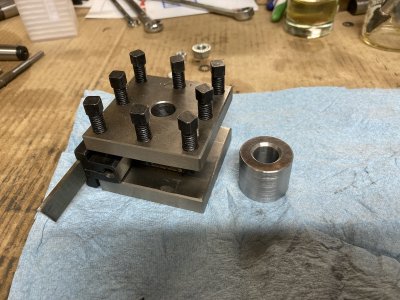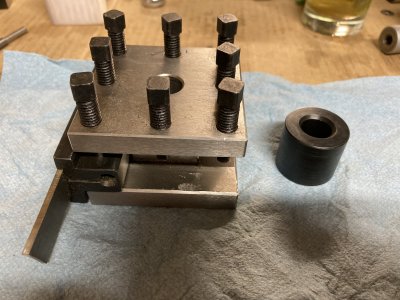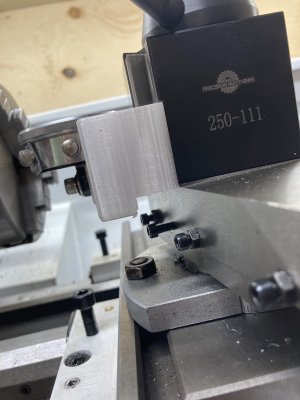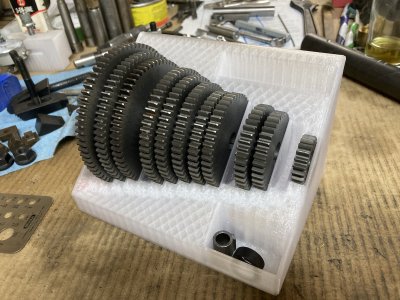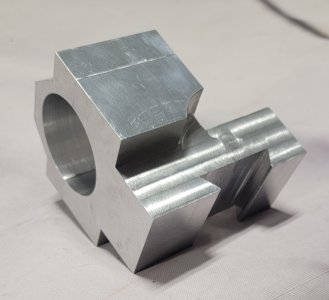Meandering tale of woe follows...
A little backstory...I had a 0XA-size QCTP on my old Atlas 618. One of the first things I did back then was get a 3d-printed dial indicator holder. I really liked it. It made it a breeze to dial in parts in the 4-jaw chuck and check how far off centre a part was both near the chuck and at the free end. Quick and simple. The 3D model came from Thingiverse (free) and I printed it at a local library (about $10 for the use of the printer). The only drawback was that printing took hours and the library didn't want the user to wander off while the print was in progress.
With that experience in hand, I looked for an AXA-size dial indicator holder for this lathe. There weren't a lot of models on Thingiverse but I eventually settled on one. Through Kijiji, I found a guy 20 minutes away that offered to print it for $14. Great, I thought. That beats a full day hanging around the library. After a few days, he had the part done and I picked it up. That's when the devil started popping out of the details.
First, the indicator was supposed to be secured to the holder via a screw through the lug on the bottom. On all my indicators, that hole in the lug is offset from the back of the indicator by the same amount. And none of them fit the printed holder. The difference was about 0.1 inches, give or take. Also, the indicator holder had a curved relief area that was supposed to clear the round dial. Not enough. To get around these problems with fit, I actually did a little offset turning (picture one section of a crankshaft) that accounted for the misalignment and spaced the indicator out enough so that the dial would fit.
But that wasn't the only problem. When I got the indicator into the holder and onto the QCTP, I found that: a) the indicator was held too high such that the plunger was above the center line of my lathe, and b) that the indicator was held too close to the centre such that the tip of the indicator was past center even with the cross slide fully wound out.
So I decided to give up on the printed holder and try again. I selected another model that was based on one that Blondihacks had created. Her Precision Matthew's machine is almost identical to my Craftex. On Thingiverse, they call it a "remix" when someone creates a new model that is just a minor modification of another model. I chose a remix of her model as it seemed to incorporate a couple of minor tweaks that would improve on the original. Visually, it seemed to place the indicator further away from center so I hoped that would alleviate the one problem.
My guy (in Milton) printed the second indicator holder for me. It's better...but still far from perfect. It too holds the indicator too high above center and while it is slightly better than the first one, the tip of the indicator's plunger is still just past center even with the compound fully wound out:
View attachment 24545
To work around the height problem, I milled away a corner of the indicator holder:
View attachment 24546
If I put a bigger part in the lathe (like a flywheel casting or whatnot) this setup isn't going to work. I won't be able to easily get the indicator in position to check for runout.
Eventually, I think I'll make my own indicator holder out of aluminum. One of my auction box lots included a dovetail cutter that, I think, is sharp enough for aluminum. Then I too can waste a bunch of stock trying to cut an appropriate size dovetail! (That's my takeaway from another thread on this site!)
Craig


